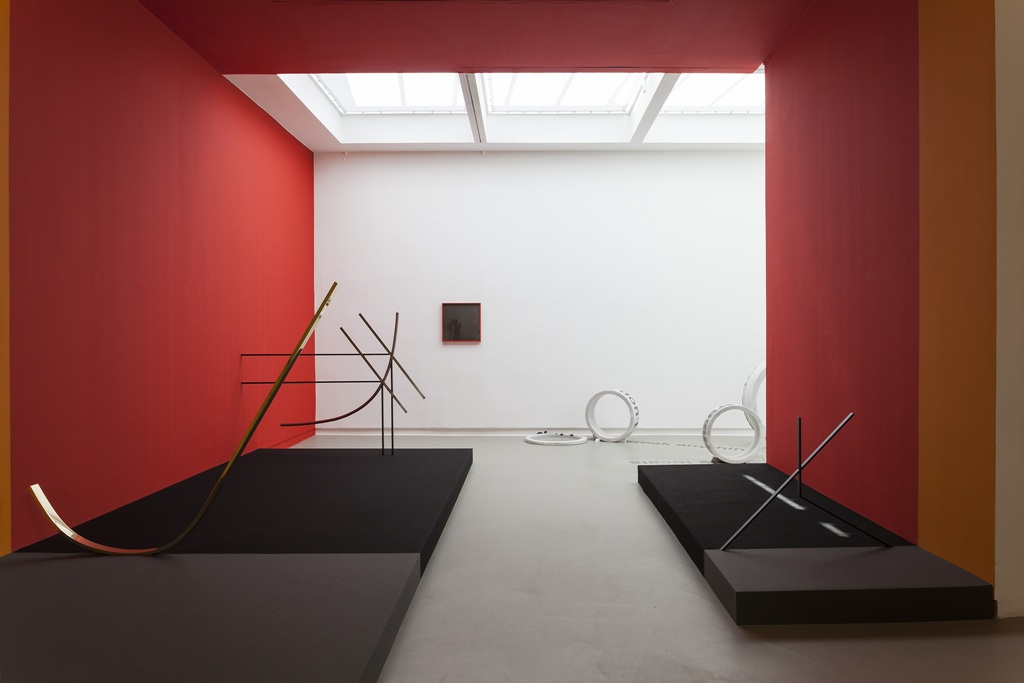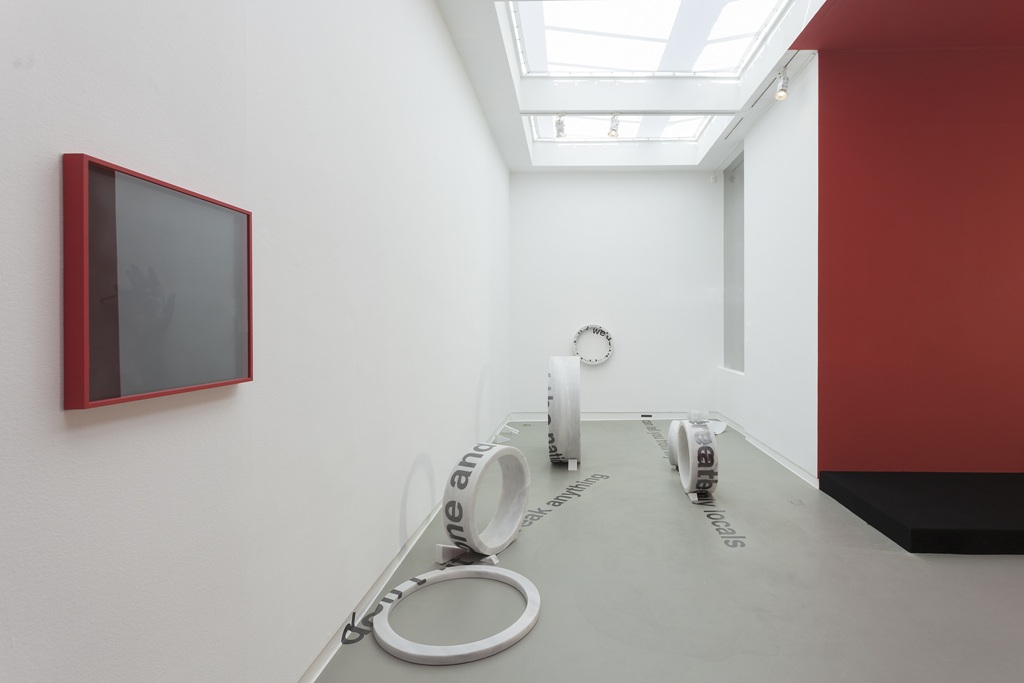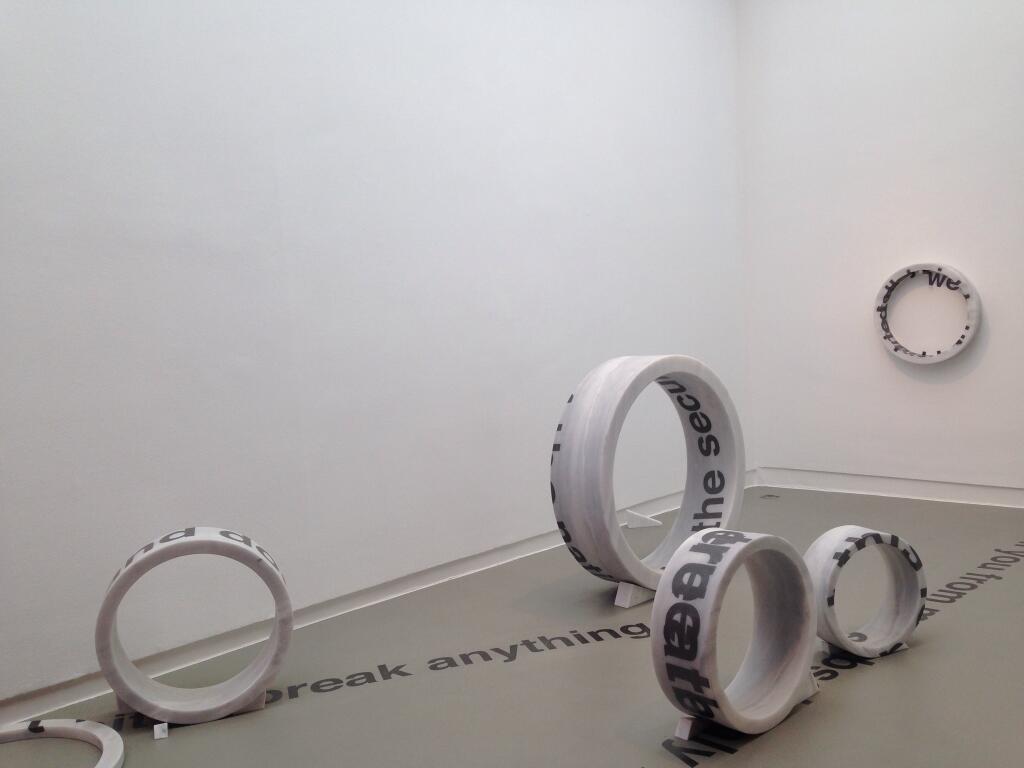
Montage Antonis Pittas at Annet Gelink Gallery

Jacob Dwyer on this year’s Summer Show by Antonis Pittas at Annet Gelink Gallery (final week).
Upon entering Antonis Pittas new show at the Annet Gelink gallery, one is guided into the space along an inverted catwalk. The inversion is created, not because the floor has been removed, but because two, foot high stages flank either side of the room. On these stages are a number of brass and steel sculptures, each either a single or combination of seemingly abstract lines. These lines remain perfectly adjacent to the walls, walls split into geometric plains of colour that move abruptly from yellow to orange to red.
In this section of the gallery, the only part not to be directly lit, the plains and lines combine to create a clinical space existing somewhere between the second and third dimension and as I moved through, it felt almost as though I was inside a computer generated image. When I came to the end of this section I opened the accompanying text that I’d picked up at the front desk and it soon became clear that this CGI would be one of a graph. Each sculpture represented “a line diagram found to illustrate a moment in recent financial history”.
Continuing down the page, I realised the space was based on a 1920s cinema design by Herbert Bayer, a man who was widely recognized as the last living member of the Bauhaus. This was to be my way into the shows title; Montage. In her essay entitled In Free Fall, Hito Steyerl states that early on in the 20th century “cinema supplement[ed] photography with the articulation of different temporal perspectives. Montage becomes a perfect device for destabilizing the observers perspective and breaking down linear time.”

The essay is primarily about linear perspective, and its ability to generate the illusion of stability in a global state of social, political and economical groundlessness/free-fall. For me, Pittas abstract/ representational steel and brass lines embraced the early possibilities of montage to push past a linear time and perspective, and somehow allude to a contemporary state of groundlessness.
Despite this however, everything felt so still. Tyre like marble sculptures, illuminated in the back of the gallery, had been paused mid roll and the undulating visualisations of economical data were frozen with the stock market. Nothing moved, nothing… apart from us. It was as if we, the audience, were invited to explore and investigate frozen moments in a groundless time.
The marble sculptures prompted eyes to move around them in an attempt to decipher the graphite sentences they had broken up. And a series of framed photographs that were separated throughout the space mobilised the viewer into walking back and fourth between them, scrutinizing the subtle differences in both subject and production. These curious images, as with most of the objects in the show, were engaging yet refreshingly understated. And coupled with the gallery’s A4 subtext, that was admittedly at times a little overbearing, provided interesting layers of time and space to be explored.

Antonis Pittas – Montage
Annet Gelink Gallery, Amsterdam
6 june – 16 august 2014
Jacob Dwyer is an artist and writer living in Amsterdam
Jacob Dwyer


